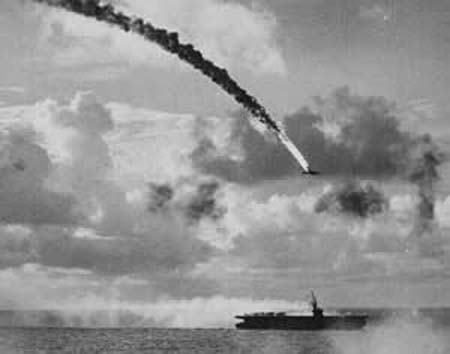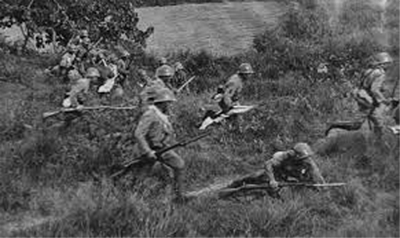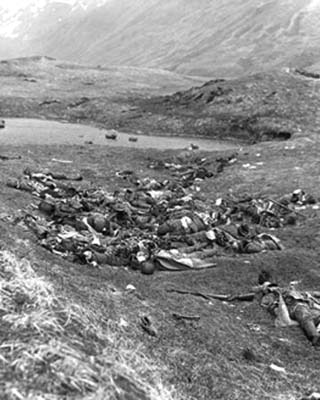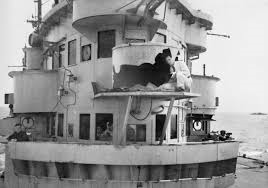Ever since I was a little boy, I have always wondered about kamikaze pilots. The whole idea just seemed so unnatural to me, even crazy. When I saw a copy of “Fire from the Sky” by Robert C Stern, therefore, I bought it straightaway. Lots of pages, lots of text and lots of pictures. What was there not to like? And besides, I really wanted to know what the explanation was for this strange phenomenon:
Apparently, what it all boils down to is that:
“Japan has a particular, and some might call peculiar, predilection for the tragic or failed hero. They are admired for their sincerity and loyalty even when their causes were met with failure and their goals could be considered traitorous. Above all else, those heroes adhered to their ideals, especially in the face of their own destruction.”
Japan’s tradition of the tragic hero goes right back to the fourth century and Prince Yamato Takeru. But after him come a whole series of legendary and historic failed heroes, stretching down the centuries. They included Yorozu, Arima no Miko, Sugawara no Michizane, Minamoto no Yoshitsune, Kusunoki Masashige, Amakusa Shiro, Oshio Heihachiro, and Saigo Takamori. Here’s Amakusa Shiro:
“The traditions of these men led in the modern age to the World War II kamikaze fighters—an unprecedented development in modern warfare which for most countries would have been unimaginable.”
As a boy, of course, I was tickled pink as we used to say then, that there were actually “ex-kamikaze pilots” who could be interviewed on our grainy black and white TV sets. Author Robert Stern, though, explains it all beautifully for us. So…….. how could you be on TV as an “ex-kamikaze pilot” ? For two reasons. No 1, you couldn’t find a suitable target and came back. No 2, mechanical failure of some kind.
The Japanese had in many ways already road tested the idea of kamikaze with their “banzai” charge. When soldiers were cornered and faced certain defeat, out they would come, heedless of their own safety and shouting “Tennoheika banzai!!” (Long live the Emperor”). The first banzai charge was on Attu on May 29 1943, with others on Saipan and Okinawa. In this way, their honourable death in battle was guaranteed.
Here’s a banzai charge before:
And after:
In 1944, the Americans were advancing into the Philippines, an act which would cut Japan off from the sources of its raw materials. What could be done? After “The Great Marianas Turkey Shoot”, only 35 aircraft had returned to Japan. 
By confronting the Americans in the ordinary way, the Japanese were losing the war by some margin. Something radical needed to be done. Perhaps the banzai charge could be developed into the kamikaze attack. At a meeting of his officers, Vice Admiral Onishi Takijiro floated the idea of pilots flying their aircraft directly into enemy vessels at the cost of their own lives. Every single one of his 23 officers immediately agreed with the idea and volunteered for duty. It didn’t take long to organise:
Author Robert Stern, states that two possible kamikazes on October 24 1944 were not the first, but just a case of an already doomed aircraft being plunged into a ship, an act called “jibaku” by the Japanese. In this case, the ships were the Sonoma and the LCI(L) 1065. This abbreviation means “Landing Craft Infantry (Large)”. They were both struck by bombers, a Betty and a Sally respectively.
Japanese aircraft were given code names by the Allies. Here’s a Betty. This particular aircraft has the surrender markings of a green cross on a white background on it:
And here’s a Sally:
The following day, October 25th 1944 provided the first genuine kamikaze hit, which came on the USS Santee, CVE 29. CVE stands for “escort carrier or escort aircraft carrier”. It was hit by a “Zeke” or Mitsubishi Zero, probably piloted by PO1C Kato. Here’s a Zeke kamikaze-ing:
Kamikaze, incidentally, means “divine wind”. I’ve been troubled by that on occasion, too. Next time, “Getting the best out of your two 250lb bombs”.













Japan back then, had only come into the 230th Century part way. The Samurai ideas hung on and enabled them to create such a thing as a kamikaze unit.
I know I’ve read that the surrender party traveled by “Betty” aircraft under MacArthur’s orders, but I’ve yet to know why he chose that plane.
My guess is that he had to choose an aircraft that was distinctive to Allied pilots and gunners on ships, and would carry a number of people. I suppose Bettys were the likeliest to fill that role.
I just noticed my fat fingers typed 230th Century – Yikes! I know you realize I meant the 20th.
Yes, I did realise, although I did think that the “GP Cox Time Machine” does have a certain ring about it.
I’ll quick go get a patent!!
Maybe this has a bearing on their treatment of prisoners. So alien all the same
It is alien, and many of the things they did were alien to human beings in general, in my opinion.
I think the Japanese then were 100% racists who just saw non-Japanese humans as inferior beings that they could treat how they wished. It happened just after WW1, continued in China in the 1930s and peaked in WW2. They are virtually cured now, although they still have their moments.
I have always wondered why soldiers in the Napoleonic Wars agreed to march at the front of the column into a hail of musket balls and near certain death.
A fair question! I’d always wondered that too. I think a lot of it was that it was the way battles were fought in those days. It continued up to and including the Battle of the Somme where the Germans couldn’t believe their luck to see the British strolling nonchalantly across No-man’s-Land “as if they were out for a morning stroll”.
It’s interesting your post was dated 7 Dec. and some replies also. For us it’s a date that will live in infamy 7 December 1941
It was totally coincidence. I always post on the seventh of a month and I schedule them in advance. Having said that, even an Englishman remembers the phrase “a date that will live in infamy”.
I am struggling to find a worse and more cowardly attack than this. Hitler’s invasion of the Soviet Union? Stalin was told in advance by British Intelligence over and over again. And that was the only one I could think of in the category, to be honest!! It’s the fact that war had not been declared that makes it difficult to find other examples.
fascinating.
Thank you, Lloyd, and there’s more to come. Quite a bit more to be honest, and hopefully, I will have some more facetious remarks to liven it up.
Love your work John.
Interesting bit of Japanese World War II history. Today’s suicide bombers come to mind.
I’m going to be looking in some detail at author Robert Stern’s ideas, and then right at the end, a two page chapter he includes which boils down basically to “Kamikazes v Jihadis”. I found it very interesting, with some incisive thoughts from the author and there will be a post or two on the present day Kamikazes eventually.
It takes a special breed of person to charge, walk or fly into certain death. You must strongly believe in your reasons for doing so!
What makes it even stranger to us is that the Kamikazes were not indoctrinated or groomed as many of the present day jihadis are. They just asked the men for volunteers ,and every hand went up.
I do wonder though, whether many of the bravest men on the Allied side in WW2 were not very close to the kamikazes. The latter had 100% chance of death, but what was it for Nettleton or Gibson or the soldier storming the German machine gun nest? Or, in other words, how many Allied attacks could have been called “Operation Certain Death”?
Thanks for highlighting what looks like a good book on a complex topic. The “ex-Kamikaze” thing is always funny (who is “Chicken Teriyaki”?), but I know too there were thousands of Kamikaze being prepared for the epic invasion of Japan that thankfully never happened.
I’d also mention that many recent accounts have indicated that “volunteering” for the Kamikaze was far from universal and often not very willing. Whole classes of new pilots were converted to “special attack” with no pilot input sought at all. It also seems that many active units rebelled at being ordered to do so. In one instance, on board the submarine aircraft carrier I-400, it nearly resulted in a full on mutiny when bombing gear was changed from conventional to special attack (non-jetisonable) without consulting the pilots. The pilots won the argument and the gear was switched back.
Like so many other stories, things were embellished quite a bit for public consumption. Enthusiastic volunteers for Kamikaze seem to have been exceptional cases, not universal.
Well, Stern is talking initially of war in the Philippines and he doesn’t mention any difficulty in recruiting kamikazes from the men under Takijiro’s command. Perhaps that goes some way to explaining the patchiness of response, maybe the experienced men were more likely to volunteer, maybe it depended on the commander.
There are more posts to come on the subject, and the general flavour of the book, which is well worth reading incidentally, is that the pilots did continue to step forward and did a great deal of damage.
In Japan apparently, both women and children were being trained to roll under vehicles with hand grenades so Allied casualties would have been horrific. My Dad was allocated to go with the RAF but he was extremely pleased that he didn’t have to.
Yeah I think the whole idea of the leadership was to shatter themselves on the invading hoard. They tried to limit Kamikaze to younger pilots and use the more experienced for guiding and protecting them. But enthusiasm could cause problems with both sides of that. Response was stronger at first, in the Philippines. But it was never wholly embraced. It would have been interesting (in a very dark, glad we never really knew sense!) to see how problematic it would have become if things carried on to the point of throwing civilians into combat.
The Kamikaze truly did cause great damage. It was functionally a smart bomb before it’s time. Defending it is a fascinating story too.
In a subsequent post you will see that the Japanese with their kamikazes accidentally invented a modern weapon, but didn’t recognise that they had, nor did the Americans. It’s a book full of surprises.
Fascinating and difficult to understand.
It certainly is. Ultimately, the reason supposedly was that these young men had to protect their parents, their family and the Emperor. When they had done absolutely everything possible to fulfil those commitments, the only thing left was an act that would cost them their lives.